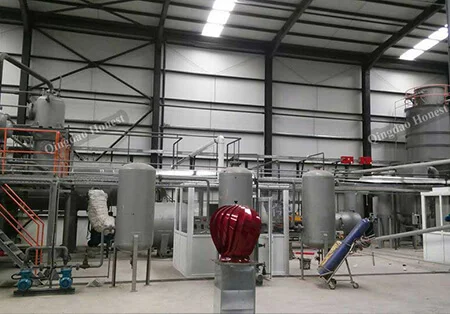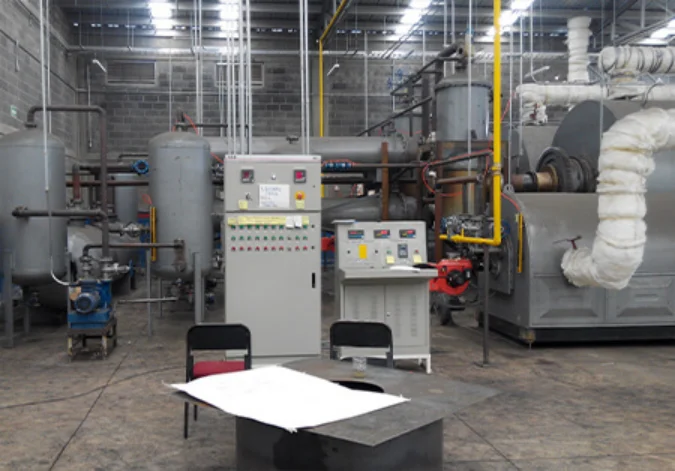Tire pyrolysis plants play a vital role in converting waste tires into useful materials such as fuel oil, carbon black, and steel wire. Yet, these facilities frequently encounter issues that hamper their effectiveness and output. A frequent difficulty arises from feeding whole tires into the reactor without proper preparation. If advanced setups like whole tire feed systems aren’t used, blockages and inconsistent heating can occur during the pyrolysis process. Whole tire feed systems remove the need for slicing tires. This reduces expenses and boosts operational smoothness.
Another notable concern is the buildup of carbon black residue. This can obstruct machinery and lower efficiency over time. Such a problem underscores the value of airtight high-temperature deslagging systems. These ensure cleaner functioning. Moreover, older facilities might not have modern cooling features. This leads to lower-than-ideal recovery of fuel oil and other products.
Wear and tear often cause equipment breakdowns. Pyrolysis reactors work under high heat and negative pressure. Without regular upkeep, parts can wear out quickly. This shows why consistent checks and prompt repairs matter.

Sustainability is a major focus for tire pyrolysis operations. Poorly built plants release emissions that pollute the air. This weakens the ecological advantages of tire recycling. Technologies like pulse dust removal systems are vital during discharge. They cut down dust and keep the workplace tidy. These systems ensure no dust escapes while running.
Safety hazards also present a big challenge. High temperatures in pyrolysis raise the chances of fires or blasts if equipment isn’t watched closely or cared for properly. To tackle these dangers, plants need strict safety rules. For instance, x-ray detection for welding seams spots weak points. Airtight feeding systems also help by keeping heat steady.
Technical diagnostics are key to spotting weaknesses in tire pyrolysis plants. Operators track vital factors like fuel oil recovery rates (typically 40-45%), carbon black yield (32-36%), and steel wire extraction (14-16%). These numbers reveal how well the plant is performing. Diagnostics also catch early hints of equipment trouble. Examples include odd temperature shifts or weaker cooling power. Fixing these quickly avoids expensive pauses and keeps output steady.

Proactive upkeep starts with routine checks on key parts like reactors, cooling units, and feeding setups. Frequent monitoring spots wear or damage early. This prevents sudden failures.
Replacing worn parts on time is essential for keeping tire pyrolysis plants safe and efficient. High heat speeds up wear on items like seals, valves, and gaskets. Swapping them out as advised stops leaks or breakdowns that might halt work.
Hot air heating systems with special heat recycling designs lower running costs. They reuse heat effectively. High-quality spare parts also extend equipment life and maintain product quality.
Efficiency in tire pyrolysis systems begins with solid pretreatment. Preparing waste tires well ensures smooth operations later. Whole tire feed systems skip the need to cut or shred tires. This slashes costs and simplifies the process..
Removing dirt or water from tires before processing is another key step. It improves the quality of outputs like fuel oil and carbon black. It also eases strain on equipment. Automated handling systems speed up this stage. They cut labor needs and boost throughput.
Controlling pyrolysis temperature and timing well is critical for top performance. Temperatures usually set between 300°C and 450°C, based on the target product. Keeping heat even across the reactor ensures tires break down fully into useful items.
Infrared thermography tracks heat spread live. It lets operators tweak settings as needed. PLCs also help by automating temperature control. They keep heating steady. Adjusting residence time—how long tires stay in the reactor—maximizes recovery of fuel oil (40-45%), carbon black (32-36%), steel wire (14-16%), and syngas (5-8%). These figures shed light on plant success.
Reducing ecological harm is a top goal for tire pyrolysis plants. Emissions from weak designs can dirty the air. This undercuts their green benefits. Pulse dust removal systems tackle this issue well. They grab dust during discharge, leaving no emissions behind.
Gas scrubbing systems also help. They neutralize harmful gases like sulfur oxides (SOx) and nitrogen oxides (NOx). High-efficiency condensers catch volatile organic compounds (VOCs) released in pyrolysis. Regular emission checks ensure plants follow rules and protect health.
Sustainability shapes modern tire pyrolysis work. Plants can take steps to shrink their environmental impact while lifting efficiency. Hot air heating with unique heat recycling designs saves energy. It reuses leftover warmth from earlier runs.
Recycling syngas to power the plant or make electricity is another smart move. Syngas makes up 5-8% of outputs and works as a solid fuel option. Likewise, carbon black can be turned into uniform granules. These serve in rubber production or as pigments.
QINGDAO XINGFU ENERGY EQUIPMENT CO., LTD provides tailored solutions to meet specific needs.
The chief outputs are fuel oil (40-45%), carbon black (32-36%), steel wire (14-16%), and syngas (5-8%).
Steps like pulse dust removal systems curb air pollution. They trap dust during operations.
Good heat control ensures materials break down fully. It also boosts byproduct yields.
Options like heat recycling and syngas use save energy. They also cut environmental harm.
Steps like whole tire feeding streamline operations. They skip cutting or shredding needs.
For details on advanced tech or custom options from Qingdao Xingfu Energy, based in Qingdao since 2010 and specializing in industrial boilers and waste recycling systems, feel free to get in touch!